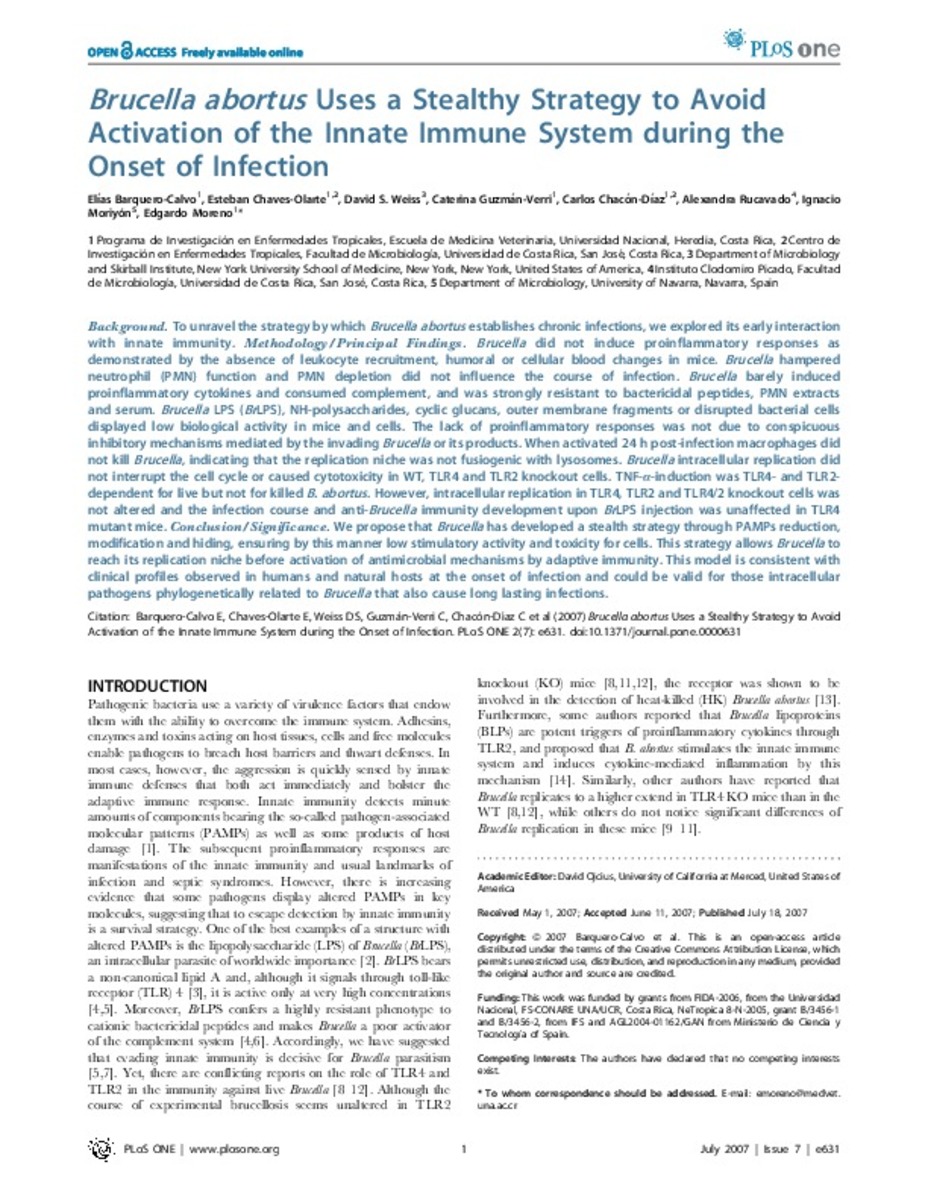Brucella abortus uses a stealthy strategy to avoid activation of the innate immune system during the onset of infection
Keywords:
Brucella abortus
Infection
Immunity innate
Immunology
Publisher:
Public Library of Science
Citation:
Barquero-Calvo E, Chaves-Olarte E, Weiss DS, Guzman-Verri C, Chacon-Diaz C, Rucavado A, et al. Brucella abortus uses a stealthy strategy to avoid activation of the innate immune system during the onset of infection. PLoS One 2007 Jul 18;2(7):e631.
Statistics and impact
0 citas en

0 citas en

Items in Dadun are protected by copyright, with all rights reserved, unless otherwise indicated.







